The cultivation method of Clivia clivia to cultivate excellent Clivia clivia
Cymbidium is a herb of the genus Amaryllidaceae. The leaves of this plant are opposite and can absorb ash layers and pollutants in the air. The growth period is long, up to 4-5 years, but the flowering period is also very long, which can last for 1-2 months. It usually opens from December to March every year. The planting process and culture methods of Cymbidium are very simple. Cymbidium is divided into soil culture and water culture. What are these two culture methods?
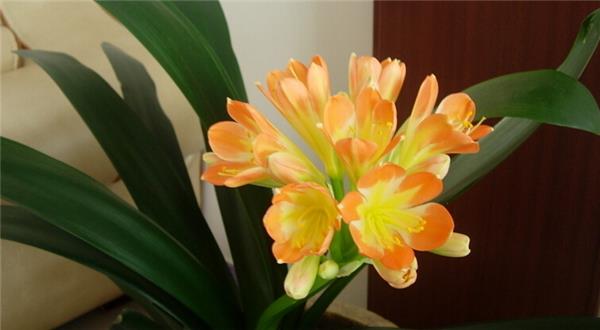
The Culture method of Magnolia mandshurica
The cultivation of Cymbidium is relatively easy, first of all, we should select the basin soil, which can be placed indoors near the window, and master the fertilizer and water according to the temperature characteristics of various places. During the growing period, the basin soil should be kept moist, and the basin soil should be dry during the high temperature and semi-dormant period, and more water should be sprayed on the leaf surface to achieve the purpose of cooling. The gentleman orchid likes fertilizer, and the rotten cake fertilizer is added to the basin soil every 2 to 3 years. Apply 5 to 40 grams of rotten cake fertilizer under the basin soil before the growing period, and apply liquid fertilizer once a year. In the management, the basin should be turned frequently to prevent the blade from deviating to one side, and if there is one side, it should be righted in time. When the temperature is 25 to 30 degrees, it is easy to cause the leaves to grow too long and narrow and affect the ornamental effect, so the cultivation of Cymbidium must pay attention to adjust the room temperature.
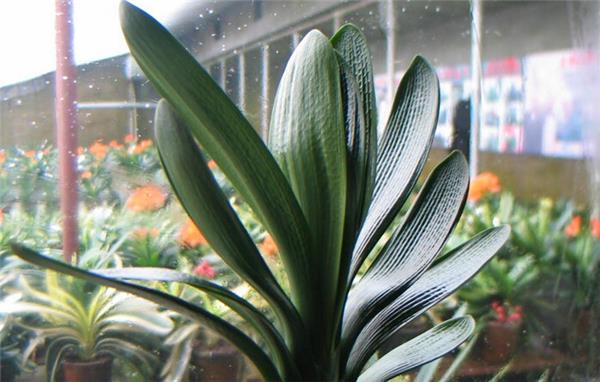
♣-suitable soil for ①
Gentleman orchid is suitable to use humus-rich soil, this kind of soil has good air permeability, good water permeability, and the soil is fertile and slightly acidic (pH6.5). General gentleman orchid soil configuration, 6 parts of rotten leaf soil, 2 parts of pine needle, 1 part of river sand or ash, 1 part of base fertilizer (pockmarked, etc.). Rotten leaf soil mainly refers to oak leaves, also known as oak trees. This kind of leaves are thick and are good humus. Nutritious and permeable. Other leaves are so thin that they are gone after decay and cannot be mixed with other media. The pot used in cultivation increases gradually with the growth of the plant, and the 3-inch pot is suitable for the cultivation of one-year-old seedlings. Change 5-inch pots in the second year, and then change into larger flowerpots every 1-2 years, which can be carried out in spring and autumn.
♣-② properly watered
The gentleman orchid has a more developed fleshy root, and the root memory stores a certain amount of water, so this kind of flower is more drought-tolerant. However, drought-tolerant flowers should not be seriously short of water, especially in the case of high temperature in summer and dry air, do not forget to water in time, otherwise, the roots and leaves of flowers will be damaged, resulting in the germination of new leaves, and the original leaves are estimated to be scorched, not only affect flowering, but even cause plant death. However, too much watering will rot the roots. Therefore, it is necessary to have a good grasp and always pay attention to the dry and wet condition of the basin soil. if it is semi-dry, it should be watered once, but the amount of water should not be much. It is just right to keep the basin soil moist and not damp.
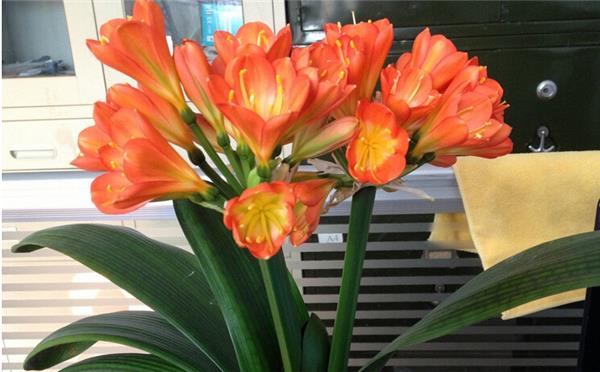
Of course, if there are conditions, magnetized water is the best, followed by Rain Water, snow water or running water in rivers, followed by water in ponds, and the worst is tap water. For flower growers living in big cities, only tap water is available, so you can use a small tank or bucket to put in the tap water and water it again after 2-3 days. This can precipitate some harmful impurities in the water. In addition, the substances contained in the water can be oxidized and purified, and the temperature of the water can be close to that of the basin soil, so that the plant will not be too cold or too hot.
♣-③ reasonable fertilization
Many flowers like fertilizer, but there should be a limit to fertilizer-loving flowers, too much fertilization will be unfavorable to growth, and even become rotten roots or scorched plants. Magnolia also belongs to this kind of plant and must be fertilized appropriately. Flowers have different nutrient requirements at different stages of growth and development. Therefore, different fertilization methods suitable for plant needs should be adopted in different periods. Such as applying base fertilizer, topdressing, extra-root fertilization and so on.
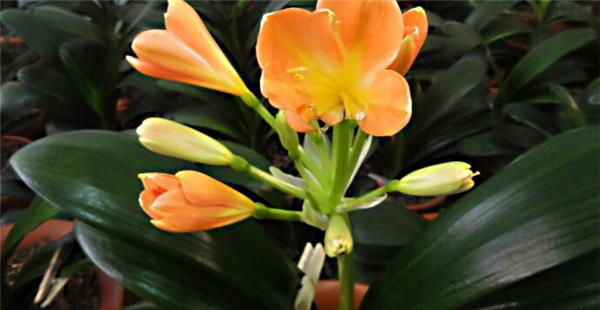
(1) apply base fertilizer (or base fertilizer). The aim is to create conditions for plant growth and development to meet its nutrient needs. The application of base fertilizer for Magnolia should be carried out when the basin is changed every two years. Apply barnyard manure (that is, livestock manure), compost, green manure, bean cake fertilizer and so on.
(2) topdressing. Mainly to promote the growth of plants. Gentleman orchid can apply fertilizer such as cake fertilizer, fish meal, bone meal and so on. Apply less at the beginning, and then the amount of fertilizer will gradually increase with the growth of the plant and the increase of leaves. When applying fertilizer, open the pot soil and apply it to the soil 2-3 meters deep, but be careful that the fertilizer should not be too close to the root system so as not to burn the root system. The application of this kind of solid fertilizer is generally enough once a month and should not be dense again.
(3) topdressing liquid fertilizer. Topdressing liquid fertilizer is that the supernatant of animals and plants that have been soaked and retted is mixed with 30: 40 clear water and then poured on the basin soil. Small seedlings should be watered 40 times, medium seedlings 30 times, and large seedlings only 20 times. After pouring fertilizer solution every 1-2 days, we should continue to irrigate clear water (the amount of water should not be too much), so that the fertilizer can seep into the root system of the basin soil and give full play to the fertilizer effect. Do not water 1-2 days before the application of liquid fertilizer, so that the basin soil is relatively dry and then apply liquid fertilizer, which is more effective. Fertilization time is best in the early morning; when pouring, let the fertilizer liquid pour along the edge of the basin, pay attention to avoid applying on the plants and leaves.
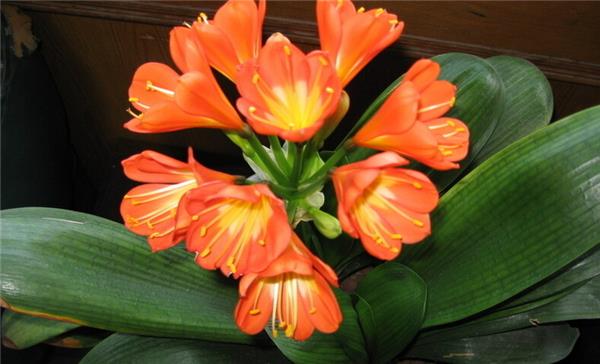
(4) extra-root topdressing. Using this method of fertilization, mainly to make up for the lack of nutrients in the soil, in order to solve the problem of lack of fertilizer in the plant, so that the seedlings grow fast and the flowers and fruits grow fat. Extra-root fertilization is to spray the fertilizer diluent directly on the leaf surface of the plant and let the nutrient elements infiltrate into the leaf tissue through the leaf epidermis cells and stomata and then transport to the whole body of the plant. The commonly used fertilization varieties are urea, potassium dihydrogen phosphate, calcium superphosphate and so on. When spraying, spray evenly to both sides of the blade. In the growing season, it is sprayed once every 4-6 days and once every 2 weeks when it is semi-dormant. Generally, it is sprayed after sunrise, and the plant should be stopped after flowering. It must be noted that this method can only be used when the plant is found to be short of fertilizer. If the plant has sufficient nutrition and exuberant growth, it is not suitable to be used.
♣-④ summer vacation
At the height of summer, the temperature is often above 30 ℃, which is extremely disadvantageous to the growth of Magnolia. For this reason, it is commonly used to set up a shed to cool down. You can also bury the magnolia in the sand (bury the basin), and then sprinkle water on the sand every morning and evening. In this way, not only the basin soil can be kept moist, but more importantly, the heat absorption effect of water evaporation in the sand can be used to achieve the purpose of cooling.
♣-⑤ post-management
The flowering period of Cymbidium is generally from February to April. After flowering, the flowering period can be prolonged by proper cooling, ventilation and reducing light. The length of the flowering period of Cymbidium can be controlled by people's cultivation techniques.
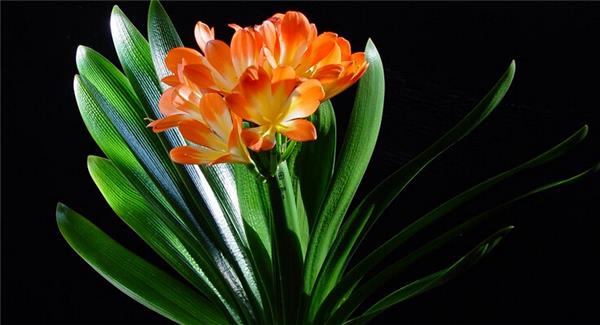
The culture method of hydroponic Cymbidium
"- Container selection -"
In order to carry out hydroponic culture of Cymbidium, we should first choose a good container. Generally speaking, it is better to use a transparent glass container. If you raise a seedling, you only need a glass can. If you want to plant a lot of water, you can use fine wire to compile a metal mesh with a diameter of one centimeter, and make a glass hydroponic box slightly smaller than the metal mesh, or you can use a goldfish tank instead. Then the metal net was covered on the hydroponic box, and the seedlings of Cymbidium were inserted into the nutrient solution through the mesh, and the depth of the flower root in the culture medium did not exceed the limit of the false bulb of the root.
The preparation of nutrient solution
Nutrient solution is divided into inorganic and organic. The inorganic nutrient solution can be prepared according to the following proportion: 1.5g of calcium, 0.01g of ferrous sulfate, 1g of urea, 1g of potassium dihydrogen phosphate and 0.5g of magnesium sulfate. After the above five inorganic salts are mixed together, they can be dissolved in 1000 grams of water. The organic culture solution was prepared as follows: fried flax seed flour 100g, bone powder (made of salt-free fresh bone) 100g, bean cake powder 150g, cooked sesame powder 50g, and then dissolved in 1000 grams of water. Compared with the above two kinds of nutrient solution, the composition of organic fertilizer is rich, but the nutrient content is not high, and the composition of inorganic fertilizer is relatively simple, but the fertilizer effect is high and the effect is fast. In order to learn from each other's strong points to offset their weaknesses, the two can be used together. If used alone, inorganic fertilizer is applied once a week, and organic fertilizer is applied once every 5 days.
-- use water
In hydroponic cultivation, tap water cannot be directly used, but "trapped" water must be used. the so-called "trapped" water is to put tap water in a container and bask in the sun for 3 to 5 days to precipitate chlorides such as bleach that are harmful to the roots of magnolia. The "trapped" water, from the outside, the sediment changes from strips to lumps, and the color of the water is green. After "trapping" good water, the position of the submerged root must not submerge the false bulb. If the water level is too shallow, the magnolia can not get sufficient water supply, and if the water level is too deep (flooding the false bulb), it will cause root fester. In the process of breeding, we should pay more attention to observe the changes of water quality, and find that some roots turn yellow or black, indicating that the water is both anoxic and less fertile, and the water must be changed immediately.
The flower of the gentleman orchid is not as magnificent as the peony, nor the fragrant Lang of the Rongli flower, let alone the splendor of the rose, but it has sword-like green leaves, thick and bright; fire-like red flowers, pavilions open, red and green reflect each other, is an ideal potted flower to beautify the environment. Hope that through the above Xiaobian introduction to the breeding methods, can cultivate a very healthy and excellent gentleman orchid.
So as not to burn the roots. The application of this kind of solid fertilizer is generally enough once a month and should not be dense again.
(3) topdressing liquid fertilizer. Topdressing liquid fertilizer is that the supernatant of animals and plants that have been soaked and retted is mixed with 30: 40 clear water and then poured on the basin soil. Small seedlings should be watered 40 times, medium seedlings 30 times, and large seedlings only 20 times. After pouring fertilizer solution every 1-2 days, we should continue to irrigate clear water (the amount of water should not be too much), so that the fertilizer can seep into the root system of the basin soil and give full play to the fertilizer effect. Do not water 1-2 days before the application of liquid fertilizer, so that the basin soil is relatively dry and then apply liquid fertilizer, which is more effective. Fertilization time is best in the early morning; when pouring, let the fertilizer liquid pour along the edge of the basin, pay attention to avoid applying on the plants and leaves.

(4) extra-root topdressing. Using this method of fertilization, mainly to make up for the lack of nutrients in the soil, in order to solve the problem of lack of fertilizer in the plant, so that the seedlings grow fast and the flowers and fruits grow fat. Extra-root fertilization is to spray the fertilizer diluent directly on the leaf surface of the plant and let the nutrient elements infiltrate into the leaf tissue through the leaf epidermis cells and stomata and then transport to the whole body of the plant. The commonly used fertilization varieties are urea, potassium dihydrogen phosphate, calcium superphosphate and so on. When spraying, spray evenly to both sides of the blade. In the growing season, it is sprayed once every 4-6 days and once every 2 weeks when it is semi-dormant. Generally, it is sprayed after sunrise, and the plant should be stopped after flowering. It must be noted that this method can only be used when the plant is found to be short of fertilizer. If the plant has sufficient nutrition and exuberant growth, it is not suitable to be used.
♣-④ summer vacation
At the height of summer, the temperature is often above 30 ℃, which is extremely disadvantageous to the growth of Magnolia. For this reason, it is commonly used to set up a shed to cool down. You can also bury the magnolia in the sand (bury the basin), and then sprinkle water on the sand every morning and evening. In this way, not only the basin soil can be kept moist, but more importantly, the heat absorption effect of water evaporation in the sand can be used to achieve the purpose of cooling.
♣-⑤ post-management
The flowering period of Cymbidium is generally from February to April. After flowering, the flowering period can be prolonged by proper cooling, ventilation and reducing light. The length of the flowering period of Cymbidium can be controlled by people's cultivation techniques.

The culture method of hydroponic Cymbidium
"- Container selection -"
In order to carry out hydroponic culture of Cymbidium, we should first choose a good container. Generally speaking, it is better to use a transparent glass container. If you raise a seedling, you only need a glass can. If you want to plant a lot of water, you can use fine wire to compile a metal mesh with a diameter of one centimeter, and make a glass hydroponic box slightly smaller than the metal mesh, or you can use a goldfish tank instead. Then the metal net was covered on the hydroponic box, and the seedlings of Cymbidium were inserted into the nutrient solution through the mesh, and the depth of the flower root in the culture medium did not exceed the limit of the false bulb of the root.
The preparation of nutrient solution
Nutrient solution is divided into inorganic and organic. The inorganic nutrient solution can be prepared according to the following proportion: 1.5g of calcium, 0.01g of ferrous sulfate, 1g of urea, 1g of potassium dihydrogen phosphate and 0.5g of magnesium sulfate. After the above five inorganic salts are mixed together, they can be dissolved in 1000 grams of water. The organic culture solution was prepared as follows: fried flax seed flour 100g, bone powder (made of salt-free fresh bone) 100g, bean cake powder 150g, cooked sesame powder 50g, and then dissolved in 1000 grams of water. Compared with the above two kinds of nutrient solution, the composition of organic fertilizer is rich, but the nutrient content is not high, and the composition of inorganic fertilizer is relatively simple, but the fertilizer effect is high and the effect is fast. In order to learn from each other's strong points to offset their weaknesses, the two can be used together. If used alone, inorganic fertilizer is applied once a week, and organic fertilizer is applied once every 5 days.
-- use water
In hydroponic cultivation, tap water cannot be directly used, but "trapped" water must be used. the so-called "trapped" water is to put tap water in a container and bask in the sun for 3 to 5 days to precipitate chlorides such as bleach that are harmful to the roots of magnolia. The "trapped" water, from the outside, the sediment changes from strips to lumps, and the color of the water is green. After "trapping" good water, the position of the submerged root must not submerge the false bulb. If the water level is too shallow, the magnolia can not get sufficient water supply, and if the water level is too deep (flooding the false bulb), it will cause root fester. In the process of breeding, we should pay more attention to observe the changes of water quality, and find that some roots turn yellow or black, indicating that the water is both anoxic and less fertile, and the water must be changed immediately.
The flower of the gentleman orchid is not as magnificent as the peony, nor the fragrant Lang of the Rongli flower, let alone the splendor of the rose, but it has sword-like green leaves, thick and bright; fire-like red flowers, pavilions open, red and green reflect each other, is an ideal potted flower to beautify the environment. Hope that through the above Xiaobian introduction to the breeding methods, can cultivate a very healthy and excellent gentleman orchid.
Related
- Wuhan Hospital Iron Tree Blooming Result Was Instantly Frightened by the Gardener Master
- Which variety of camellia is the most fragrant and best? Which one do you like best?
- What is the small blue coat, the breeding methods and matters needing attention of the succulent plant
- Dormancy time and maintenance management of succulent plants during dormancy
- Minas succulent how to raise, Minas succulent plant pictures
- What are the varieties of winter succulent plants
- How to raise succulent plants in twelve rolls? let's take a look at some experience of breeding twelve rolls.
- Attention should be paid to water control for succulent plants during dormant period (winter and summer)
- Watering experience of twelve rolls of succulent plants
- Techniques for fertilizing succulent plants. An article will let you know how to fertilize succulent plants.



